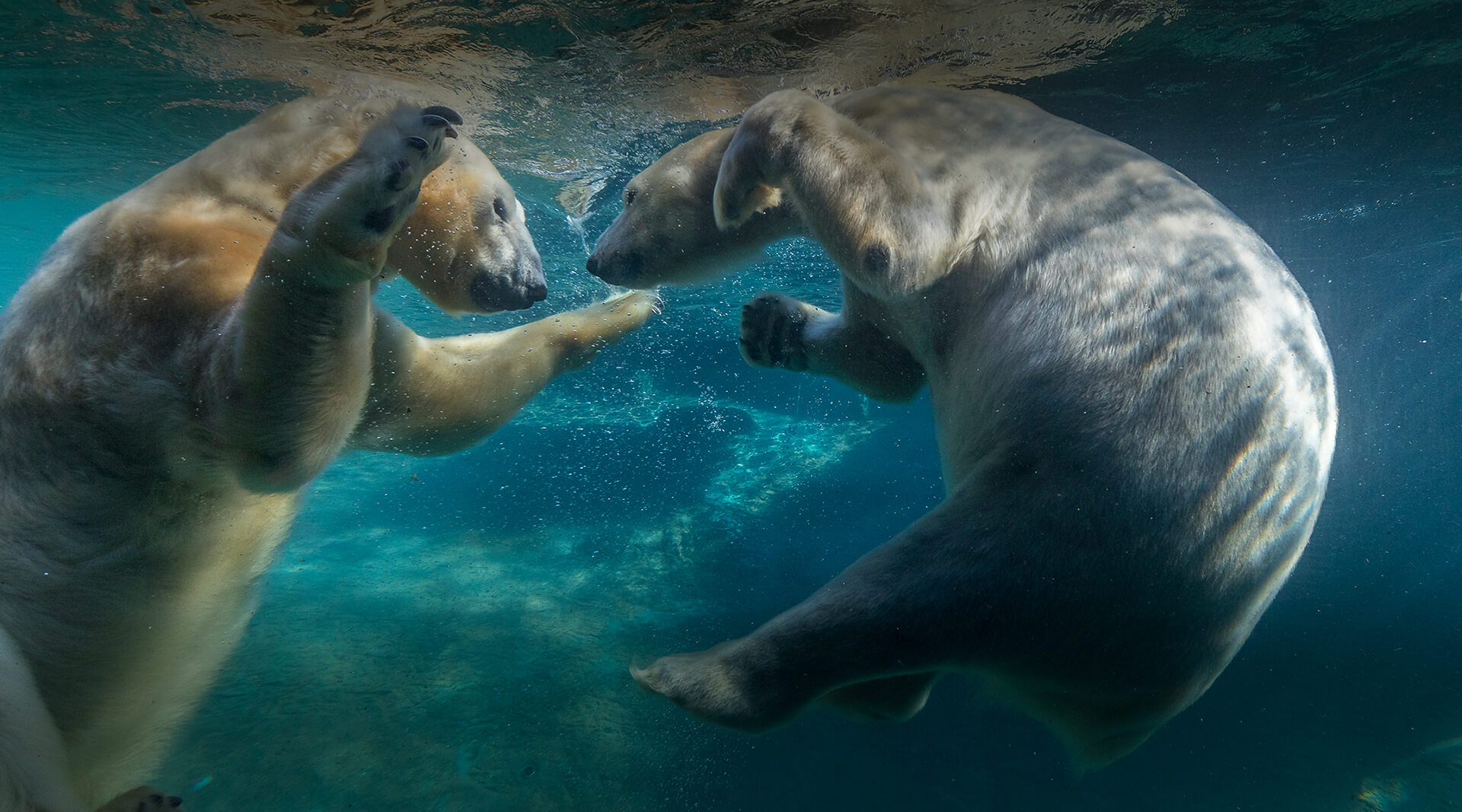Polar Bears: Icons of the Arctic
IUCN Conservation Status: Vulnerable
There is perhaps no other species that symbolizes the earth’s frozen oceans like the polar bear. And for us at San Diego Zoo Wildlife Alliance, there are few other species that embody our commitment to saving wildlife more than these majestic bears, with the help of our innovative partners around the world.
Standing up to 12 feet tall and weighing up to 1,600 pounds, polar bears have no natural predators. Intelligent, patient, and strong, they are built to rule the Arctic.
Although they are the largest land carnivore on Earth, polar bears are excellent swimmers and spend most of their lives traversing between sea ice floes. In fact, their scientific name, Ursus maritimus, means sea bear. They have water-repellent fur and a thick layer of fat under their skin, which keeps them warm in subzero temperatures.
Their habitat is literally melting away, as climate change endangers their existence. The Arctic is warming twice as fast as the rest of the planet. Disappearing sea ice threatens the survival of the species, and evidence shows that loss of sea ice is correlated with declines in a polar bear’s body condition, reproductive success, and survival.
Collaborative Conservation
Saving polar bears requires innovative thinking and collaboration with partners around the globe. In 1997, San Diego Zoo was asked to provide sanctuary to the polar bears we care for by wildlife officials. The bears had been found orphaned, without a mother to guide, protect, or catch seals to feed them.
Wildlife officials warned they would not survive even one winter. The bears came to our care with challenges, but the experienced wildlife care specialists at the Zoo provide opportunities to express natural polar bear behavior in an environment that frequently includes snow and ice. And perhaps most importantly, the bears participate in scientific and other conservation efforts that help us and our partners around the world work to save the species in the face of climate change.
“The polar bears we care for at the Zoo are contributing directly to our conservation efforts and helping us to understand what polar bears need to thrive in the wild,” says Megan Owen, Ph.D., corporate director of wildlife conservation science at San Diego Zoo Wildlife Alliance.
For example, scientists have been working collaboratively in the Arctic for many years to assess the impact of human activity around key polar bear denning sites, where polar bear mothers go to give birth during winter and to provide a safe space for newborn cubs. Assessing what can be heard in the den is important to managing the impact of human activities.
Polar bears at the San Diego Zoo worked collaboratively with our science team and wildlife care professionals to signal when they could hear sounds—allowing us to determine the hearing ranges of polar bears and informing guidelines for protecting polar bears from sonic disturbances.
We are also working with partners on an energetics study: As sea ice shrinks, polar bears increasingly face a world where it is difficult for them to gather enough food to survive. Our science team and wildlife care professionals conducted studies to determine the amount of energy spent by polar bears in some activities, so that we can assess what they need to thrive in the wild.
In the Field
San Diego Zoo Wildlife Alliance also participates in research and conservation out in the field with a variety of partners.
Over the past three years, we have been helping to monitor the bears as they migrate around Canada’s Hudson Bay. It’s the largest inland sea in the world, covering nearly half a million square miles; and it is home to approximately 2,000 polar bears.
It is a collaborative effort with the University of Alberta, Environment and Climate Change Canada, and our long-time partners, Polar Bears International. We use a combination of trackers embedded into collars and ear tags—which upload multiple locations each day—to trace the movements of the bears in near real time, via satellites.
“Each spring, I join a dedicated team to head out in a helicopter to locate polar bears on the sea ice,” writes Nicholas Pilfold, Ph.D., a scientist at San Diego Zoo Wildlife Alliance. “I have worked with polar bears in their habitat for ten years—and every time I get close, I am flooded with wonderment and joy that we share the planet with such magnificent animals. I also feel deference: there is a respect that this mighty species commands.”

